The content of the article
The appearance of a new member in the family is a huge event, very joyful and significant. But along with tenderness, love and happiness, many new cares and responsibilities come to the house. And young parents have to re-learn, especially if the baby is the first. How to feed the baby, how to arrange breastfeeding, how to cope with diaper rash and find the right diapers. Among all these gaps, the bathing issue remains particularly acute. After all, the child in the first days of life seems so fragile and defenseless that many mothers are literally afraid to take the crumbs in their arms, let alone such complex manipulations as water procedures. Here grandmothers come to the rescue - more experienced “mothers”. In this article you will learn about the benefits of water procedures, you can prepare all the necessary bathing accessories, and also get acquainted with the technique of safe bathing for a newborn baby.
The benefits of water treatments
Our grandmothers also believed that with frequent bathing, the child grows better. There is some truth in this, because the enveloping property of water provides a gentle massage and an effect on all skin, due to which the blood circulation increases. Everyone knows that bathing is very important for the child, this is not only a necessary part of hygiene procedures, but also an invaluable contribution to the health of the crumbs.
Bathing is the protection of the baby’s skin from various microorganisms, bacteria, dirt, sweat, urine, cosmetic powders and creams. We may not notice this, but many foreign substances accumulate on the baby’s skin, and the baby’s delicate epidermis is sensitive to any pathogens. This leads to diaper rash and anxiety.
Water treatments incredibly calm the baby. Water gently massages joints and muscles, in water it is easier for a baby to move, control arms and legs. You probably know how children sleep after massage - deeply and for a long time. The same effect can be achieved with the help of baths.
In the future, water procedures will help you cope with the hyperactivity of the child. The kid in the water moves especially intensively, spends energy, sleeps better. If you add a couple of drops of pine oil to the water, the child will quickly fall asleep and sleep for at least three to four hours until it is completely hungry.
From the first days of life, some mothers put a rubber ring on the baby’s neck, which allows them to hold their crumbs on the surface. Firstly, it is convenient for mom - she will not have to hold the child, bent over in the back during the whole bath. Secondly, it gives incredible freedom of action - the baby will be able to actively move himself, this trains his muscles and joints. Thirdly, the child finds himself in a familiar aquatic environment, this pacifies him.
If you add decoctions of herbs to the water, for example, a series, you can cope with a rash of any nature - diaper rash, diathesis, prickly heat, urticaria, etc. A decoction of a series perfectly heals, relieves inflammation and itching, and dries.
In Russia, they believed that the first bathing should be carried out by the mother or father, not allowing anyone to touch the water in which the child was bathing. It was believed that so parents protected the baby from the evil eye and damage. For the same reason, water after the first bath was poured under a large tree in the garden.
What to prepare for bathing a newborn
So that in the process of water procedures not to run after the necessary items, you need to prepare in advance everything that may be needed during and after swimming.
- Bath. Today, there are many different bathtubs on sale with a variety of built-in functions.Baths with a slide are very popular, which allow you to hold the baby with one hand, this is very convenient if the mother does not have assistants, and she is forced to bathe the baby alone. Choose baths with a corrugated bottom so that the baby does not slip. Carefully feel the inside of the product so that there are no chips, cracks, sharp areas. Before first use, be sure to clean the bath with detergent, and disinfect the surface with boiling water or an antiseptic.
- Soap. For bathing, ordinary children's soap is suitable, but remember that it is not worth it to abuse. The fact is that even the most gentle soap dries the baby’s skin, rinses off the natural protective layer from the skin. Use soap is not more than twice a week, the rest of the time it is enough to swim in clean water. Remember that it is impossible to wash the genitals of girls with soap - this violates the natural environment of the mucous membrane, can cause the appearance of synechia. If you are bathing your baby for the very first time, do it without soap.
- Towel. Usually, many new towels, diapers and other textile accessories are bought for the baby’s birth. But all new things are quite tough and rough until they go through a few washings. Therefore, often to wipe the baby’s delicate skin, an old sheet or worn diaper is suitable. But remember that the item must be carefully ironed (high temperature steam kills germs). For the skin of a child, we choose only natural fabrics - linen, cotton, etc.
- Ladle. You may need a small bucket to rinse with clean water after bathing.
- Thermometer. At first, you should not rely on your own feelings. It is very important to make the child a comfortable temperature, otherwise the baby may have a persistent unpleasant association with water. It depends on you whether the child will love bathing or will be afraid of water all his life.
No washcloths and sponges for bathing the newborn! Mom's touch is best for the baby right now. And toys for the first bath are also not needed yet - the baby still does not understand anything, only smells and tactile sensations are important for him.
In addition, you must definitely prepare in advance everything that you may need after bathing - clean clothes, a diaper, powder or cream for a diaper, cotton buds and discs, antiseptics for treating wounds, etc.
How to bathe a newborn baby for the first time
Doctors recommend conducting water procedures immediately before bedtime, namely, before the last feeding. Indeed, this mode is suitable for many children - the baby bathes, eats up and goes to bed for a long time. But sometimes mothers have to vary this moment - some newborn babies “stain the diaper” just during or after a meal, the baby has to be washed again. In this case, you need to bathe the child after eating, preferably an hour later. Try not to bathe the baby on a full stomach - this will bring him discomfort, in addition, increases the risk of regurgitation. If the time for swimming is already selected, you should go directly to the procedure.
- The question remains open - is it worth boiling water for swimming. On the one hand, the baby is still too small, and on the other, we cannot raise a child in a sterile environment. So, the answer is simple - we boil water until the navel heals in the baby. When this vital artery closes and the risk of infection decreases dramatically, you can not boil water.
- Do not heat the air in the room too much, especially do not make a sharp temperature difference between the bathroom and the nursery. The usual room temperature of 24-26 degrees will come off. Do not rush to immediately carry the child into the water. Undress the baby, give him the opportunity to take air baths for 3-5 minutes, it is very beneficial for the skin and for the body. At this time, you can make a crumb of the lungs massage - circular stroking and rubbing the arms and legs, the stomach in a clockwise direction.Put your baby on your stomach - this is also very useful.
- In the first days of bathing, until the umbilical wound heals, potassium permanganate, potassium permanganate, can be dissolved in water. However, be careful, dissolve the powder in a small amount of water, then strain the solution and only then pour it into a common bath. The fact is that insoluble particles of potassium permanganate may appear in the liquid, which, if it comes into contact with the skin, can cause a microscopic burn. The water in the bath should turn out a little pink.
- In the first bath, it is better not to add some decoctions, salts, nothing but potassium permanganate to the bath. If the baby develops irritation or allergies, you will not know the cause. Over time, when swimming becomes habitual, you can add decoctions of a string of chamomiles to the water. It is very useful to add sea salt to the water. But all this later, not in the first bath!
- So that parents do not have to bend over the bath, for convenience it is placed on chairs or even transferred to a room. This greatly facilitates the process.
- So, everything is ready for the procedure. Older generations bathed children, dropping them into the water right in the diaper. Modern pediatricians do not see this as necessary. However, for greater certainty, you can do just that - lower the baby into the water wrapped in a diaper. This will protect the baby from fear, from a sharp change in the environment. Lower the baby into the water gradually, starting with the legs. You can slowly water your child with water from your hands, while stroking and calming him. Most kids enjoy swimming for the first time, but there are kids who are scared. That is why mom should constantly touch the child, show her presence, calm her voice.
- After you completely lower the baby into the water, keeping your head on the surface, let the crumbs get used to the aquatic environment for some time. Then you can slowly open the diaper. It is immediately removed or left at the bottom of the bath so that the body does not slip. Keep the baby like this - the mother holds the child perpendicular to her body, one hand holds the far shoulder, the child’s head rests on her mother’s wrist. Thus, mom remains with one free hand for all manipulations. However, it is better to spend the first bathing with assistants, especially if the mother is inexperienced.
- Washing a child is a responsible event, however, the first bath is just an introduction to the procedure. If the baby is crying - stop bathing, it may be worth repeating the "swim" the next day. In the subsequent washing of the child will consist of several stages. When the baby gets used to the water, you need to moisten a cotton pad in the water and wipe the child’s eyes with it. Then the ears are cleaned with a new clean disk - only shells. Next, wash my baby’s head with baby soap or special shampoo for newborns. Thoroughly wash with soap or water all the crumbs of the crumbs - inguinal, axillary, buttock, cervical area. Remember the most important rule for bathing babies - NEVER LEAVE A CHILD ONE! Even if he’s on a hill, you can’t go away even for a minute - it is mortally dangerous.
- In conclusion, be sure to rinse the baby with clean, pre-prepared water. If from early childhood you want to introduce hardening elements into hygiene, the water prepared for rinsing should be a couple of degrees lower.
- At the end, the child is wrapped in a prepared diaper or towel, taken out to the nursery for further events.
After you bathe the baby, you need to carefully wipe it. Do not rub the skin too much, it is still very tender, it is enough just to get it wet with a towel. Then put on a diaper and clean clothes. Cream, powder or oil under the diaper is applied only if necessary, if there is diaper rash, this should not be done for prevention.In no case do not use cotton buds to clean your ears - so you just tamp the sulfur in the ear canal and push it back. Simply wipe the auricles with the corner of a towel. Then the baby needs to be fed heartily and put to bed. After such procedures, the child will sleep soundly and continuously.
Features of bathing girls and boys
It’s a little more difficult for girls to bathe, because there is a high risk of microbes and particles of feces getting into the vagina. To avoid this, the girl needs to be washed in exactly one direction - from the vagina to the anus. This will protect against many genitourinary infections. When bathing a girl after a bowel movement, you must first rinse the ass under a stream of clean water and only then lower it into a common bath. Some mothers with anxiety find whitish deposits on the labia mucosa. No need to worry, this is the original lubricant that protects the baby in utero, it covers all accessible areas of the body. It can be removed gradually, with each bathing a little. The grease does no harm and is gradually washed off.
The first bath is a very important and unforgettable moment that will certainly leave you with many memories. Do not forget to provide a free member of the family with a camera - these moments must be captured!
Video: how to bathe a newborn

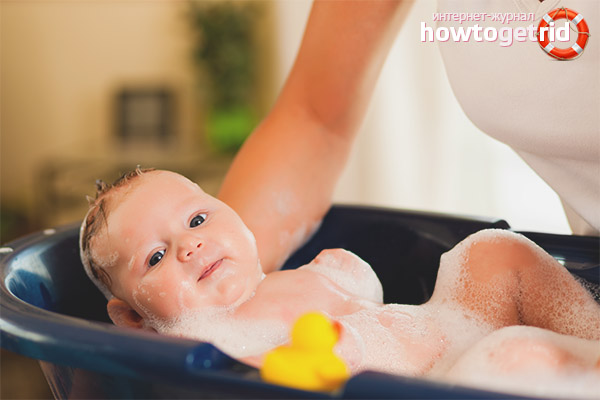
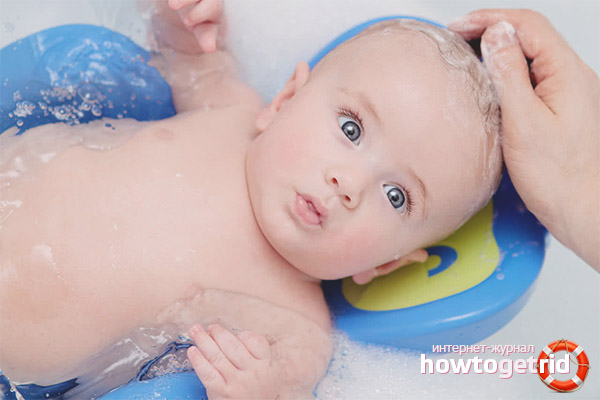
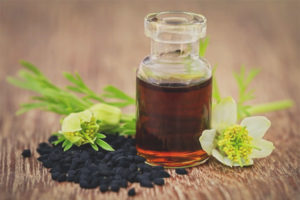
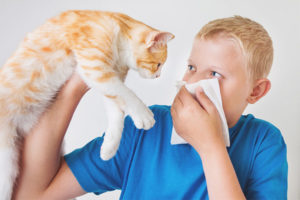
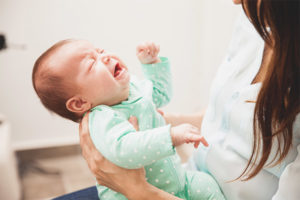

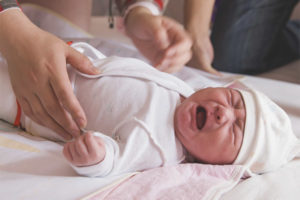
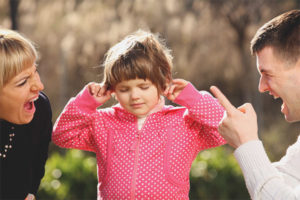
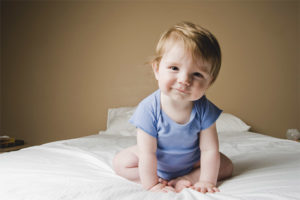
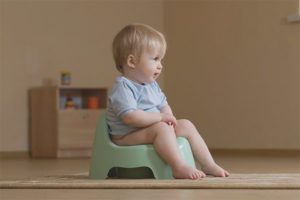
Submit